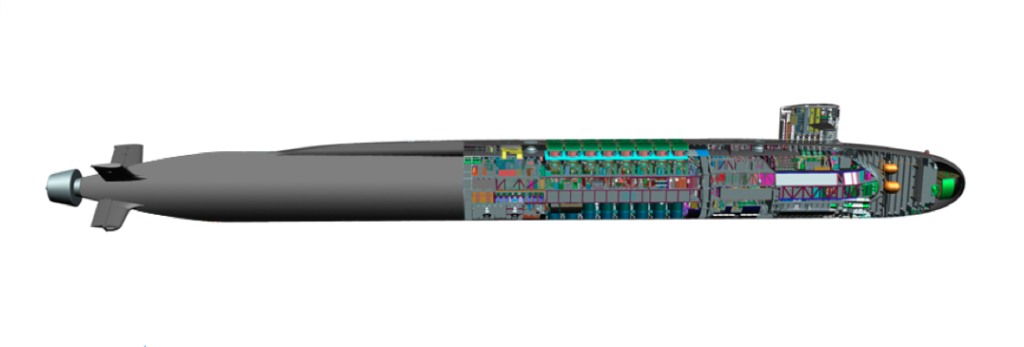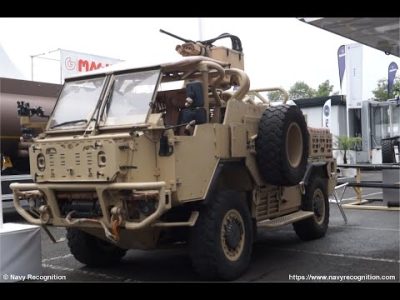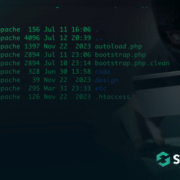Published on 09/19/2021 – Last Updated on 09/19/2021 by OTC
The Columbia (SSBN-826) class ballistic missile submarine (SSBN) program of the U.S. Navy is intended to design and build a class of 12 new SSBNs to replace the U.S. Navy’s current force of 14 ageing Ohio-class SSBNs. Since 2013, the U.S. Navy has consistently designated the Columbia-class program as its top priority. The Navy procured the first Columbia-class boat in FY2021 and wants to procure the second boat in FY2024.
Missions of SSBNs
The U.S. Navy has three types of submarines: nuclear-powered attack submarines (SSNs), nuclear-powered cruise missile submarines (SSGNs), and nuclear-powered ballistic missile submarines (SSBNs) (SSBNs). SSNs and SSGNs are multi-mission ships that perform both peacetime and wartime missions. They are not armed with nuclear weapons.
SSBNs, on the other hand, serve a specialized mission of strategic nuclear deterrence. SSBNs are equipped with submarine-launched ballistic missiles (SLBMs), which are large, long-range missiles armed with multiple nuclear warheads, to carry out this mission. SSBNs launch their SLBMs from large-diameter vertical launch tubes in the boat’s middle section. The primary mission of the SSBNs and their SLBMs is to deter a nuclear attack on the United States by demonstrating to other countries that the United States has an assured second-strike capability, which means a survivable system for carrying out a retaliatory nuclear attack.
The U.S. Navy SSBNs, which are sometimes referred to informally as “boomers,” form one leg of the U.S. strategic nuclear deterrent force, or “triad,” which also includes land-based intercontinental ballistic missiles (ICBMs) and land-based long-range bombers.
Ohio-Class SSBNs
The U.S. Navy currently operates 14 Ohio (SSBN-726) class SSBNs. The boats are commonly called Trident SSBNs or simply Tridents because they carry Trident D-5 SLBMs. They were entered service in 1984-1997. They were initially designed for 30-year service lives. Still, They were later certified for 42- year service lives, consisting of two approximately 19-year periods of operation separated by a roughly four-year midlife nuclear refuelling overhaul, called an engineered refuelling overhaul (ERO). The nuclear refuelling overhaul includes both nuclear refuelling and overhaul work on the ship unrelated to nuclear refuelling.
The boats were initially designed to each carrying 24 SLBMs. However, as part of DOD’s plan to comply with U.S.-Russia strategic nuclear arms control limits, four SLBM launch tubes on each boat have been deactivated, reducing to 20 the number of SLBMs they can carry.
Unlike most U.S. Navy ships, which are operated by single crews, SSBNs are used by alternating crews (called the Blue and Gold crews) to maximize the percentage of time they spend at sea in deployed status.
The first of the 14 Ohio-class SSBNs (SSBN-730) will reach the end of its 42-year service life in 2027. The remaining 13 will get the ends of their service lives at a rate of roughly one ship per year after that, with the 14th reaching the end of its service life in 2040.
Columbia Class SSBNs
The U.S. Navy officials have stated consistently since September 2013 that the Columbia-class program is the Navy’s top priority program, and that this means, among other things, that from the Navy’s perspective, the Columbia-class program will be funded, even if that comes at the expense of funding for other Navy programs.
The U.S. Navy plans call for procuring 12 Columbia-class boats to replace the current force of 14 Ohio Class SSBNs.

In explaining the planned procurement quantity of 12 boats, the Navy states the following:
– Ten operational SSBNs—meaning boats not encumbered by lengthy maintenance actions—are needed to meet strategic nuclear deterrence requirements for having a certain number of SSBNs at sea at any given moment.
– Fourteen Ohio-class boats were needed to meet the requirement for ten operational boats because, during the middle years of the Ohio class life cycle, three and sometimes four of the boats were nonoperational at any given moment on account of being amid lengthy midlife nuclear refuelling overhauls or other extended maintenance actions.
– Twelve (rather than 14) Columbia-class boats will be needed to meet the requirement for ten operational boats because the midlife overhauls of Columbia Class boats, which will not include a nuclear refuelling, will require less time (about two years) than the midlife refuelling overhauls of Ohio-class boats (which require about four years from contract award to delivery), the result being that only two Columbia-class boats (rather than three or sometimes four) will be amid midlife overhauls or other extended maintenance actions at any given moment during the middle years of the Columbia-class life cycle.
Planned Procurement Schedule
The U.S. Navy procured the first Columbia-class boat in FY2021. It wants to procure the second boat in the class in FY2024 and the remaining ten at a rate of one per year from FY2026 through FY2035. Under this schedule, the U.S. Navy projects that the lead boat (i.e., first boat) would be delivered in FY2028, the second in FY2031, and the remaining ten at a rate of one per year from FY2033 through FY2042. After being delivered in FY2028, the lead boat would undergo substantial testing to be ready for its first deterrent patrol in 2031.
Columbia-Class Design
The Columbia-class design includes 16 SLBM tubes instead of 24 SLBM tubes (of which 20 are now used for SLBMs) on Ohio-class SSBNs. Although the Columbia-class design has fewer SLBM tubes than the Ohio-class design, it is larger than the Ohio-class design in terms of submerged displacement. Like the Ohio-class design before it, the Columbia-class design will be the largest submarine ever built by the United States.

Key Features
– The Columbia class is being designed for 42-year expected service life.
– Unlike the Ohio-class design, which requires a midlife nuclear refuelling, the Columbia class is to be equipped with a life-of-the-ship nuclear fuel core (a nuclear fuel core that is sufficient to power the ship for its entire expected service life).
The Columbia class is to be equipped with an electric-drive propulsion train instead of the mechanical-drive propulsion train used on other Navy submarines. The electric-drive system is expected to be quieter (i.e., stealthier) than a mechanical-drive system.
– The Columbia class is to have SLBM launch tubes that are the same size as those in the Ohio class (i.e., tubes with a diameter of 87 inches and a length sufficient to accommodate a D-5 SLBM).
– The Columbia class will have a beam of 43 feet, compared to 42 feet on the Ohio-class design, and a length of 560 feet, the same as that of the Ohio-class design.
-. Instead of 24 SLBM launch tubes, as on the Ohio-class design, the Columbia class is to have 16 SLBM launch tubes.
Conclusion
Ballistic missile submarines are the most survivable leg of the triad. When on patrol, SSBNs are, at present, virtually undetectable, and there are no known, near-term credible threats to the survivability of the SSBN force. The Columbia Class SSBN Submarines will be the backbone of U.S. nuclear deterrence in the ocean and seas.
Check out Naval Library App to find out the specifications of the U.S. Navy submarines.
















Comments